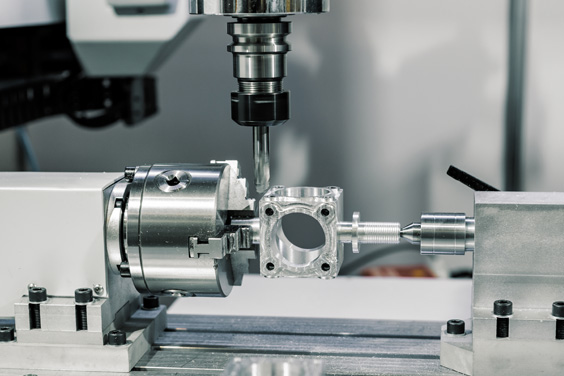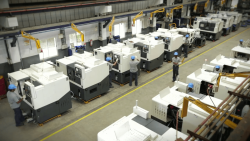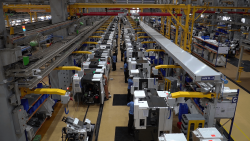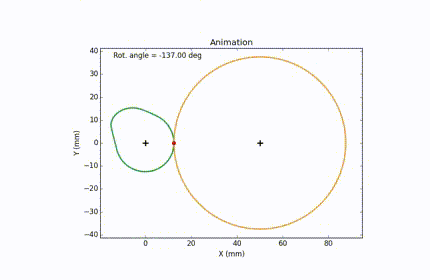The government recently announced its intention to spend almost 10 per cent of India's gross domestic product (GDP) in the fiscal year 2020 on economic relief measures.
While a lot has been experienced and said about the COVID-19 situation on businesses, what are the real implications facing the economy post-lock-down in India?

1. MSME rescued?
A sector that is bucking under the consequence of the COVID-19 pandemic is the Micro, Small and Medium Enterprises (MSME), which contributes to around 35 per cent of India's manufacturing output. The MSME sector, which is also the second-largest employment generator in the country after agriculture, received special attention from the government through monetary relief programs.
But India's resurgence strategy, unlike other emerging economies, misses direct fiscal support. Most are not opting for loans since there is uncertainty on the future of their business and orders.
2. Automation adoption

India is heavily labor-dependent, for it to suddenly shift to automation comes with many concerns. Firstly, automation looks like huge investments, something that cannot be afforded to keep the current situation in mind. Secondly, Adoption might take longer since most of the Indian manufacturers are in a planning phase, luxuries like crisis lifelines like automation and remote processing are still a long-term goal that might span over half a decade or more.
Can we reinvent the chain?
Many industries are heavily reliant on Imports. Although the disruption is forcing businesses to reconsider existing supply chains reinventing them is not a feasible option. Many businesses complain about the high cost per part from Indian manufacturers, unorganized processes and competitive options from china make it hard to sway from the norm.
Self-reliant reforms are finding it hard to see practical application while manufacturing-driven countries like China are already coming back up to speed; In reality, it will take drastic structural changes to match their, expertise, scale and ability, to be even considered a competition.
3. Business

When there are physical restrictions there is no other way than to go digital, but how many can make use of digital means for their business, especially in a labor-intensive industry? Now trade shows are cancelled with digital ones still finding ground. Along with this, supply chain issues, order disruption, production issues are all real hindrances business are dealing with even post lockdown.
As of July, data, more than 6,83,000 companies shut due to COVID implications. The repercussions are still ongoing and to see how many will survive and overcome must be observed.
4. Exodus
Droves of migrant workers flocked from cities and towns to their native places has seriously impacted production. For small manufacturing units, workers are fundamental to their survival. Steps need to be taken urgently to counter the reverse migration trend.
5. Raw material

The extended lockdown has severely impacted the import of raw materials or outsourced jobs like in the automotive sector. With these stuck during transit, production has been jolted to a stop. Again, with supply chain issues unresolved businesses are suffering.
With these indicators, we can tell that the real implications are ongoing and yet to be experienced. To know more about the latest in the industry, follow us on our social:




 India
India
 China
China
 Europe
Europe










 India is heavily labor-dependent, for it to suddenly shift to automation comes with many concerns. Firstly, automation looks like huge investments, something that cannot be afforded to keep the current situation in mind. Secondly, Adoption might take longer since most of the Indian manufacturers are in a planning phase, luxuries like crisis lifelines like automation and remote processing are still a long-term goal that might span over half a decade or more.
Can we reinvent the chain?
Many industries are heavily reliant on Imports. Although the disruption is forcing businesses to reconsider existing supply chains reinventing them is not a feasible option. Many businesses complain about the high cost per part from Indian manufacturers, unorganized processes and competitive options from china make it hard to sway from the norm.
Self-reliant reforms are finding it hard to see practical application while manufacturing-driven countries like China are already coming back up to speed; In reality, it will take drastic structural changes to match their, expertise, scale and ability, to be even considered a competition.
India is heavily labor-dependent, for it to suddenly shift to automation comes with many concerns. Firstly, automation looks like huge investments, something that cannot be afforded to keep the current situation in mind. Secondly, Adoption might take longer since most of the Indian manufacturers are in a planning phase, luxuries like crisis lifelines like automation and remote processing are still a long-term goal that might span over half a decade or more.
Can we reinvent the chain?
Many industries are heavily reliant on Imports. Although the disruption is forcing businesses to reconsider existing supply chains reinventing them is not a feasible option. Many businesses complain about the high cost per part from Indian manufacturers, unorganized processes and competitive options from china make it hard to sway from the norm.
Self-reliant reforms are finding it hard to see practical application while manufacturing-driven countries like China are already coming back up to speed; In reality, it will take drastic structural changes to match their, expertise, scale and ability, to be even considered a competition.
 When there are physical restrictions there is no other way than to go digital, but how many can make use of digital means for their business, especially in a labor-intensive industry? Now trade shows are cancelled with digital ones still finding ground. Along with this, supply chain issues, order disruption, production issues are all real hindrances business are dealing with even post lockdown.
As of July, data, more than 6,83,000 companies shut due to COVID implications. The repercussions are still ongoing and to see how many will survive and overcome must be observed.
When there are physical restrictions there is no other way than to go digital, but how many can make use of digital means for their business, especially in a labor-intensive industry? Now trade shows are cancelled with digital ones still finding ground. Along with this, supply chain issues, order disruption, production issues are all real hindrances business are dealing with even post lockdown.
As of July, data, more than 6,83,000 companies shut due to COVID implications. The repercussions are still ongoing and to see how many will survive and overcome must be observed.
 The extended lockdown has severely impacted the import of raw materials or outsourced jobs like in the automotive sector. With these stuck during transit, production has been jolted to a stop. Again, with supply chain issues unresolved businesses are suffering.
With these indicators, we can tell that the real implications are ongoing and yet to be experienced. To know more about the latest in the industry, follow us on our social:
The extended lockdown has severely impacted the import of raw materials or outsourced jobs like in the automotive sector. With these stuck during transit, production has been jolted to a stop. Again, with supply chain issues unresolved businesses are suffering.
With these indicators, we can tell that the real implications are ongoing and yet to be experienced. To know more about the latest in the industry, follow us on our social: 

